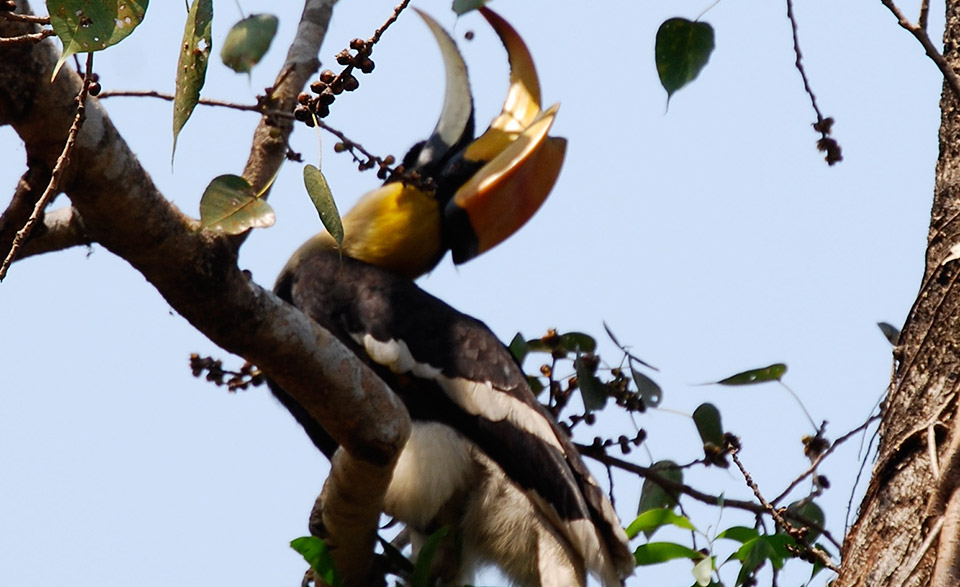
The Sacred Natural Sites Initiative regularly features “Conservation Experiences” of custodians, protected area managers, scientists and others. This post features the experiences of Ms. Archana Godbole who is the Director of the Applied Environmental Research Foundation based in Pune India. AERF has been working in the Western Ghats for nearly two decades recuperating its acred groves and making them the spill for cultural conservation projects in favour of biodiversity and ecosystems. Click here to read the full case study on “Reviving and conserving the sacred groves of Maharashtra’s Western Ghats”.

The Indian Hornbill is one of the flag ship and indicator species used to promote the conservation of biodiversity and ecosystems in the villages across the Wester Ghats. (Photo: Yajant Sarnaik 2008).
The north Western Ghats of India in Maharashtra state is an eco-region forming a global biodiversity hotspot. The high biodiversity of the region is complemented by a high diversity in local traditions in the region. Almost every village in the Sahaydri-Konkan region has at least one sacred grove with a surface ranging from just a few to hundreds of hectares. Sacred groves have survived for many hundreds of years, and today act as reservoirs of biodiversity harbouring many plant and animal species as a patched network of relatively undisturbed wildlife.
Threats to sacred groves stem mainly from acculturation and globalization. Small sacred groves are often considered as small negligible patches of forests that hinder development work. Many sacred groves have been destroyed, and only the man-made temples were preserved. Examples of reasons why these groves have been removed are encroachment, road construction, grazing, the building of dams and canals and urbanization. Decisions to alter or remove a certain grove often come from the nearby villages where increased western influences cause a weakening of religious beliefs that is spreading throughout the region.
The region is likely to benefit of an appropriate form of co-management of the sacred groves, by local custodians as well as by other regional stakeholders. The most promising way to achieve this is by re-establishing cultural norms and empowering custodians, local people and traditional governance bodies. Long term work is important to create solid alliances between different parties. Continuous financial support is needed together with strong ongoing facilitation of the processes involved. These could be effective means to pass on the sacred groves and their biocultural importance to the future generations.
AERF has initiated work within 250 sacred groves from the region and significantly improved the conservation status of 100 sacred groves within the last 15 years. They have recorded the conservation status of 230 sacred groves, completed biodiversity inventories of 142 sacred groves and developed an understanding of the cultural importance of sacred groves. Through the continuous facilitation and involvement of communities, AERF revived the traditional practice of protecting and managing for 13 sacred groves from the region. Furthermore, the awareness of the situation has increased in many communities.






